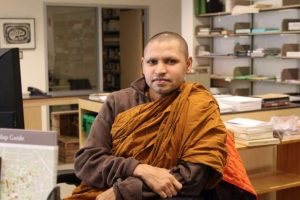
Every Buddhist would find it difficult to contest the idea that Buddhism values spiritual authority. Buddhism’s need for legitimate transmission inevitably means upholding the monastic sangha as the prime repository of Dharma. The sangha is a holy hierarchy that Buddhism cannot survive without. From a Mahayana perspective (and the Great Vehicle absolutely honors its monastic members), endorsing full nunhood in the Theravada and Vajrayana traditions will actually reinforce and strengthen their clerical communities rather than weaken them. This is a prospect that tradition-sensitive Buddhists would treasure most.
All Buddhists sincerely see themselves as custodians of their beloved religion. Rather than through accusations of scriptural ignorance or vested interests, the current conundrum can be approached in a more pragmatic way: frankly put, does the ordination of women benefit or harm the monastic sangha? Phrasing it like this sounds uncomfortable, but strip away all the academic debates about the Buddha’s rebuke of Mahaprajapati, or the tantric texts’ opinion about the female nature, and one will see that this has been the real concern for 2600 years: whether the function of the sangha is somehow weakened by the presence of women.

Exactly how full nunhood compromises the diffusion of Dharma has always been uncertain and not fully articulated. Yet those in favour of recognizing nuns’ ordination have a much clearer case to present. Accepting female ordination doubles human resources and talent to a small demographic that happens to be critical to Buddhism’s survival. Indeed, the best way for spiritual establishments to consolidate themselves is to open their doors to those whose merits deserve admittance. We only need to look at Chinese Buddhist organizations and temples like Fo Guang Shan or Tzu Chi to see that nuns invested with real authority have an important part to play in flourishing Buddhist foundations.
Nuns also serve as role models for laywomen. Nuns are the center around which women gather. And through them, women (and men) are inspired to become Buddhists. Yet many bhikkhuni orders in Asia still struggle for basics like food, hobbling their work to spread Dharma. To use business-speak, this is an inefficient waste of human resources. Female novices in the Himalayan regions work extremely hard to survive. Leaving aside the old stories of powerful yoginis, no matter how hard real Tibetan, Bhutanese, or Nepalese women practice, their social standing cannot begin to match their much better-financed and respected male counterparts.
The idea of propping up communities of nuns struggling for funding is unfair, but also impractical. Fully ordained nuns vested with official, institutional endorsement will allow them to reach the full potential they owe to the Buddha. Full ordination for women who want to follow the Theravada and Mulasarvastivada Vinaya (as opposed to having to resort to the Dharmaguptaka of the Chinese traditions) will encourage a culture of greater material support, resolving a problem that may have contributed to the so-called demise of the Theravada nuns’ order in the 11th and 13th centuries. The vicious cycle of weak moral (and therefore, material) support can always be countered by a virtuous circle moving in the opposite direction.If there was ever a case for Theravada and Vajrayana bhikkhuni ordination, it is one of hardheaded realism. Protecting the establishment of the sangha requires not sentimentality but pragmatism. Is the full and complete inclusion of women not simply good business?














